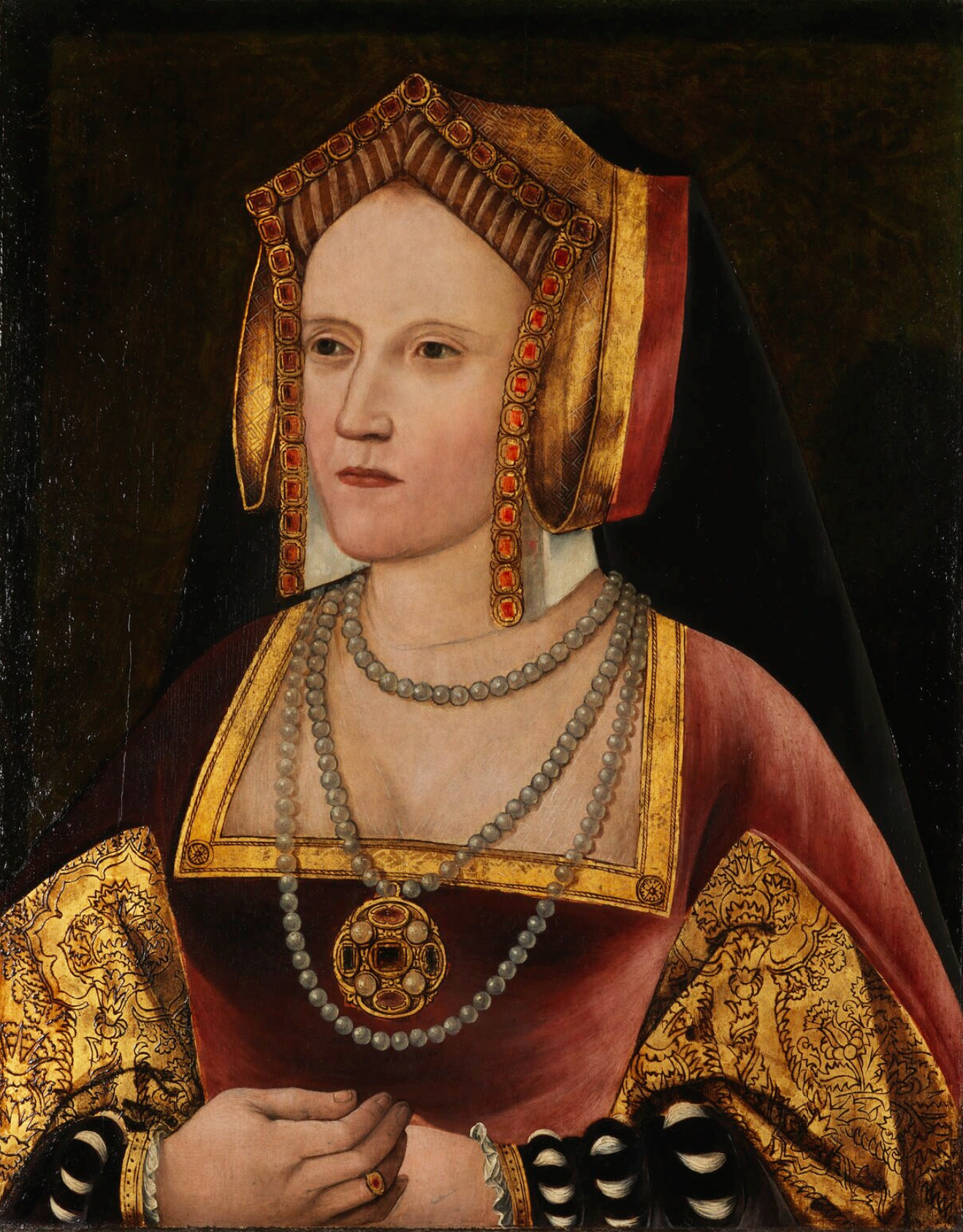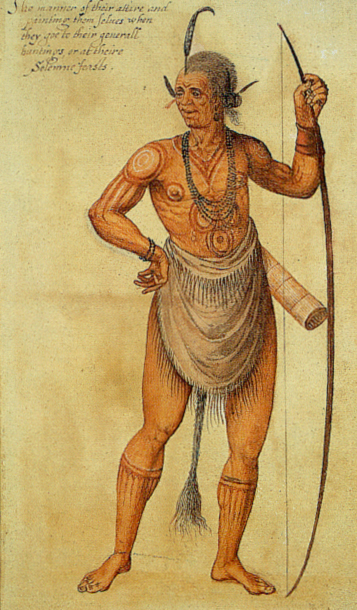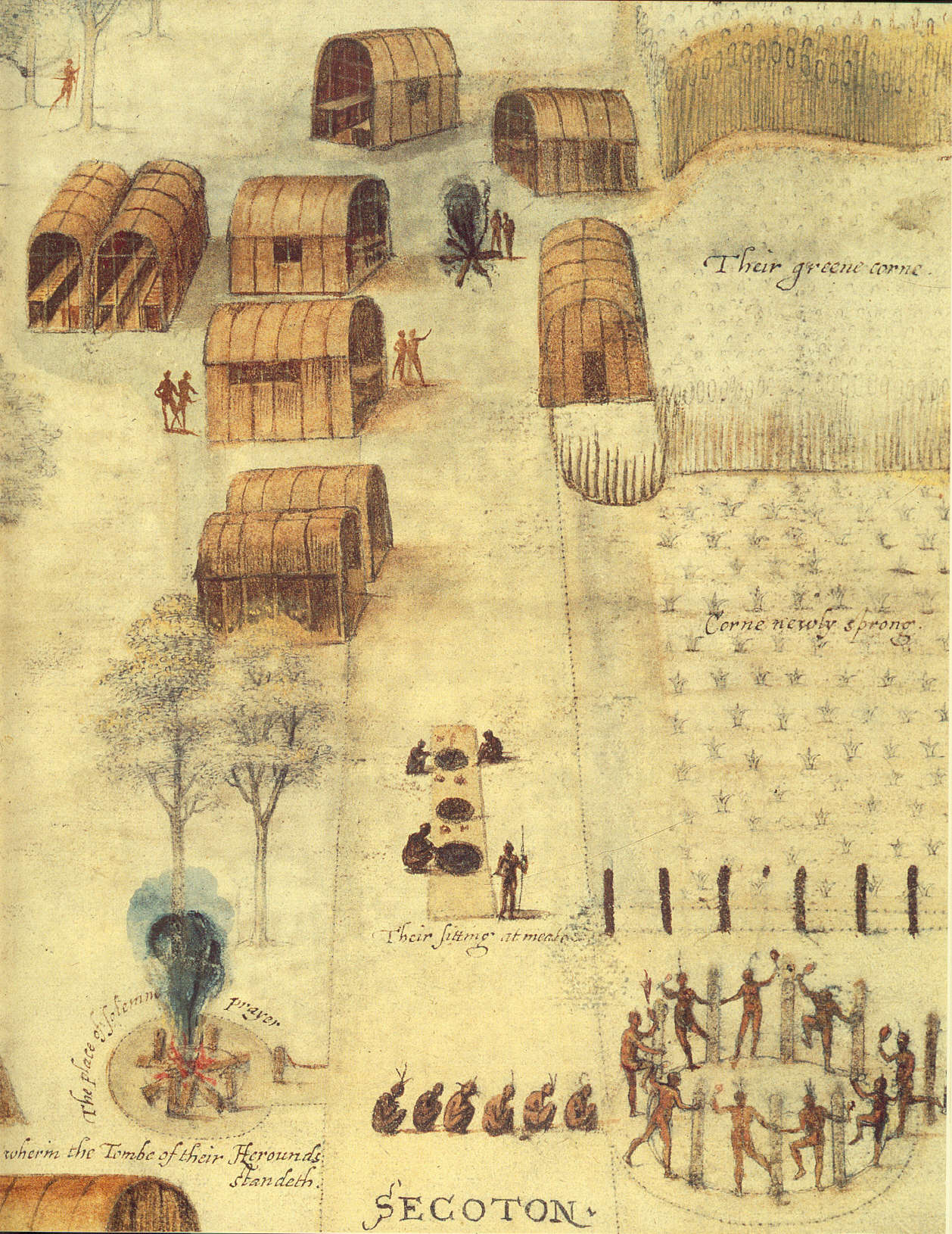|
Durham House (London)
Durham House, or Durham Inn, was the historic London town house of the Bishop of Durham in the Strand. Its gardens descended to the River Thames. History Origins Bishop Thomas Hatfield built the opulent Durham House in about 1345. It had a large chapel and a high-ceilinged great hall supported by marble pillars. On the Strand side its gatehouse led to a large courtyard. The hall and chapel faced the entrance, and private apartments overlooked the river. Accounts describe Durham House as a noble palace befitting a prince. King Henry IV, his son Henry, Prince of Wales (later Henry V), and their retinues stayed once at the residence. Tudor and Jacobean era While Durham House remained an episcopal palace, Catherine of Aragon lived as a virtual prisoner there between her marriages to Arthur, Prince of Wales and King Henry VIII. Eventually, Bishop Cuthbert Tunstall relinquished it to King Henry VIII, who contracted to give the bishop in return Coldharbour in Dowgate Ward, London ... [...More Info...] [...Related Items...] OR: [Wikipedia] [Google] [Baidu] |
Durham House Allen
Durham most commonly refers to: * Durham, England, a cathedral city and the county town of County Durham * County Durham, an English county *Durham County, North Carolina, a county in North Carolina, United States * Durham, North Carolina, a city in North Carolina, United States Durham may also refer to: Places Australia *Durham, Queensland, an outback locality in the Bulloo Shire of Queensland *Durham Ox, Victoria *Durham Lead, Victoria, a locality in the City of Ballarat Canada *Durham, Nova Scotia *Durham, Ontario, a small town in Grey County, Ontario *Durham County, Ontario, a historic county *Regional Municipality of Durham, a regional government in the Greater Toronto Area of Ontario **Durham (electoral district), a federal electoral district in Durham Region **Durham (provincial electoral district), a provincial electoral district in Durham Region *Durham Bridge, New Brunswick * Durham Parish, New Brunswick *Durham-Sud, Quebec (also known as South Durham) United Kingdom * ... [...More Info...] [...Related Items...] OR: [Wikipedia] [Google] [Baidu] |
Mary I Of England
Mary I (18 February 1516 – 17 November 1558), also known as Mary Tudor, and as "Bloody Mary" by her Protestant opponents, was Queen of England and Ireland from July 1553 and Queen of Spain from January 1556 until her death in 1558. She is best known for her vigorous attempt to reverse the English Reformation, which had begun during the reign of her father, Henry VIII. Her attempt to restore to the Church the property confiscated in the previous two reigns was largely thwarted by Parliament, but during her five-year reign, Mary had over 280 religious dissenters burned at the stake in the Marian persecutions. Mary was the only child of Henry VIII by his first wife, Catherine of Aragon, to survive to adulthood. Her younger half-brother, Edward VI, succeeded their father in 1547 at the age of nine. When Edward became terminally ill in 1553, he attempted to remove Mary from the line of succession because he supposed, correctly, that she would reverse the Protestant ref ... [...More Info...] [...Related Items...] OR: [Wikipedia] [Google] [Baidu] |
Tobias Matthew
Tobias Matthew (also Tobie and Toby; 13 June 154629 March 1628), was an Anglican bishop who was President of St John's College, Oxford, from 1572 to 1576, before being appointed Vice-Chancellor of Oxford University from 1579 to 1583, and Matthew would then become Dean of Durham from 1583 to 1595. All three positions, plus others, were appointed to Matthew by Elizabeth I. Eventually, he was appointed Archbishop of York in 1606 by Elizabeth's successor, James I. Early life He was the son of Sir John Matthew of Ross in Herefordshire, England, and of his wife Eleanor Crofton of Ludlow. Tobias was born at Bristol on 13 June 1546. Matthew was educated at Wells, Somerset, and then in succession at University College and Christ Church, Oxford. He proceeded BA in 1564, and MA in 1566. Ties to Elizabeth I He attracted the favourable notice of Elizabeth I, and his rise was steady though not quite rapid. He was first appointed a public orator in Oxford in 1569, and then President of S ... [...More Info...] [...Related Items...] OR: [Wikipedia] [Google] [Baidu] |
Phonetic Transcription
Phonetic transcription (also known as phonetic script or phonetic notation) is the visual representation of speech sounds (or ''phones'') by means of symbols. The most common type of phonetic transcription uses a phonetic alphabet, such as the International Phonetic Alphabet. Versus orthography The pronunciation of words in all languages changes over time. However, their written forms ( orthography) are often not modified to take account of such changes, and do not accurately represent the pronunciation. Words borrowed from other languages may retain the spelling from the original language, which may have a different system of correspondences between written symbols and speech sounds. Pronunciation can also vary greatly among dialects of a language. Standard orthography in some languages, such as English and Tibetan, is often irregular and makes it difficult to predict pronunciation from spelling. For example, the words ''bough'', ''chough'', ''cough'', ''though'' and ''thr ... [...More Info...] [...Related Items...] OR: [Wikipedia] [Google] [Baidu] |
Carolina Algonquian Language
Carolina Algonquian (also known as Pamlico, Croatoan) was an Algonquian language of the Eastern Algonquian subgroup formerly spoken in North Carolina, United States. Carolina Algonquian was formerly spoken by Secotan (later known as Machapunga), Chowanoke and Weapemeoc (subgroups Poteskeit and Paspatank) peoples. Translation into English In 1584 Sir Walter Raleigh had dispatched the first of a number of expeditions to Roanoke Island to explore and eventually settle the New World. Early encounters with the natives were friendly, and, despite the difficulties in communication, the explorers were able to persuade "two of the savages, being lustie men, whose names were Wanchese and Manteo" to accompany them on the return voyage to London, in order for the English people to report both the conditions of the New World that they had explored and what the usefulness of the territory might be to the English Once safely delivered to England, the two Indians quickly made a sensation at ... [...More Info...] [...Related Items...] OR: [Wikipedia] [Google] [Baidu] |
Thomas Harriot
Thomas Harriot (; – 2 July 1621), also spelled Harriott, Hariot or Heriot, was an English astronomer, mathematician, ethnographer and translator to whom the theory of refraction is attributed. Thomas Harriot was also recognized for his contributions in navigational techniques, working closely with John White to create advanced maps for navigation. While Harriot worked extensively on numerous papers on the subjects of astronomy, mathematics and navigation, he remains obscure because he published little of it, namely only ''The Briefe and True Report of the New Found Land of Virginia'' (1588). This book includes descriptions of English settlements and financial issues in Virginia at the time. He is sometimes credited with the introduction of the potato to the British Isles. Harriot was the first person to make a drawing of the Moon through a telescope, on 5 August 1609, about four months before Galileo Galilei. After graduating from St Mary Hall, Oxford, Harriot traveled to ... [...More Info...] [...Related Items...] OR: [Wikipedia] [Google] [Baidu] |
Wanchese (chief)
Wanchese (fl. 1585–1587) was the last known ruler of the Roanoke Native American tribe encountered by English colonists of the Roanoke Colony in the late sixteenth century. Along with Chief Manteo, he travelled to London in 1584, where the two men created a sensation in the royal court. Hosted at Durham House by the explorer and courtier Sir Walter Raleigh, he and Manteo assisted the scientist Thomas Harriot with the job of deciphering and learning the Carolina Algonquian language. Unlike Manteo, Wanchese evinced little interest in learning English, and did not befriend his hosts, remaining suspicious of English motives in the New World. In April 1586, having returned to Roanoke, he finally ended his good relations with the English, leaving Manteo as the colonists' sole Indian ally. Roanoke people The Roanoac people were a Carolina Algonquian-speaking people whose territory comprised present-day Dare County, Roanoke Island, and part of the mainland at the time of Englis ... [...More Info...] [...Related Items...] OR: [Wikipedia] [Google] [Baidu] |
Manteo (Croatan)
Manteo was a Croatan Native American, and was a member of the local tribe that befriended the English explorers who landed at Roanoke Island in 1584. Though many stories claim he was a chief, it is understood that his mother was actually the principal leader of the tribe. This leadership would not have automatically passed down to her children as many English at the time may have assumed. In 1585 the English returned to Roanoke, arriving too late in the year to plant crops and harvest food, and Manteo helped the colonists make it through the harsh winter. He traveled to England on two occasions, in 1584 and 1585. After staying there, he was among those who sailed for the New World in 1587 along with Governor John White and his colonists, who founded the failed settlement later known as " The Lost Colony". On Sunday, August 13, 1587, Manteo was christened on Roanoke Island, making him the first Native American to be baptized into the Church of England. Early life Very little ... [...More Info...] [...Related Items...] OR: [Wikipedia] [Google] [Baidu] |
Whitehall Palace
The Palace of Whitehall (also spelt White Hall) at Westminster was the main residence of the English monarchs from 1530 until 1698, when most of its structures, except notably Inigo Jones's Banqueting House of 1622, were destroyed by fire. Henry VIII moved the royal residence to White Hall after the old royal apartments at the nearby Palace of Westminster were themselves destroyed by fire. Although the Whitehall palace has not survived, the area where it was located is still called Whitehall and has remained a centre of government. White Hall was at one time the largest palace in Europe, with more than 1,500 rooms, overtaking the Vatican, before itself being overtaken by the expanding Palace of Versailles, which was to reach 2,400 rooms. The palace gives its name, Whitehall, to the street located on the site on which many of the current administrative buildings of the present-day British government are situated, and hence metonymically to the central government itse ... [...More Info...] [...Related Items...] OR: [Wikipedia] [Google] [Baidu] |
John Aubrey
John Aubrey (12 March 1626 – 7 June 1697) was an English antiquarian, antiquary, Natural philosophy, natural philosopher and writer. He is perhaps best known as the author of the ''Brief Lives'', his collection of short biographical pieces. He was a pioneer Archaeology, archaeologist, who recorded (often for the first time) numerous megalithic and other Ancient monument, field monuments in southern England, and who is particularly noted for his systematic examination of the Avebury henge monument. The Aubrey holes at Stonehenge are named after him, although there is considerable doubt as to whether the holes that he observed are those that currently bear the name. He was also a pioneer Folkloristics, folklorist, collecting together a miscellany of material on customs, traditions and beliefs under the title "Remaines of Gentilisme and Judaisme". He set out to compile English county histories, county histories of both Wiltshire and Surrey, although both projects remained unfini ... [...More Info...] [...Related Items...] OR: [Wikipedia] [Google] [Baidu] |
Sir Walter Raleigh
Sir Walter Raleigh (; – 29 October 1618) was an English statesman, soldier, writer and explorer. One of the most notable figures of the Elizabethan era, he played a leading part in English colonisation of North America, suppressed rebellion in Ireland, helped defend England against the Spanish Armada and held political positions under Elizabeth I. Raleigh was born to a Protestant family in Devon, the son of Walter Raleigh and Catherine Champernowne. He was the younger half-brother of Sir Humphrey Gilbert and a cousin of Sir Richard Grenville. Little is known of his early life, though in his late teens he spent some time in France taking part in the religious civil wars. In his 20s he took part in the suppression of rebellion in the colonisation of Ireland; he also participated in the siege of Smerwick. Later, he became a landlord of property in Ireland and mayor of Youghal in East Munster, where his house still stands in Myrtle Grove. He rose rapidly in the favour of Qu ... [...More Info...] [...Related Items...] OR: [Wikipedia] [Google] [Baidu] |
Guilford Dudley
Lord Guildford Dudley (also spelt Guilford) ( 1535 – 12 February 1554) was an English nobleman who was married to Lady Jane Grey. King Edward VI had declared her his heir, and she occupied the English throne from 10 July until 19 July 1553. Guildford Dudley had a humanist education and was married to Jane in a magnificent celebration about six weeks before the King's death. After Guildford's father, the Duke of Northumberland, had engineered Jane's accession, Jane and Guildford spent her brief rule residing in the Tower of London. They were still in the Tower when their regime collapsed and they remained there, in different quarters, as prisoners. They were condemned to death for high treason in November 1553. Queen Mary I was inclined to spare their lives, but Thomas Wyatt's rebellion against Mary's plans to marry Philip of Spain led to the young couple's execution, a measure that was widely seen as unduly harsh. Family and marriage Lord Guildford Dudley was the ... [...More Info...] [...Related Items...] OR: [Wikipedia] [Google] [Baidu] |







